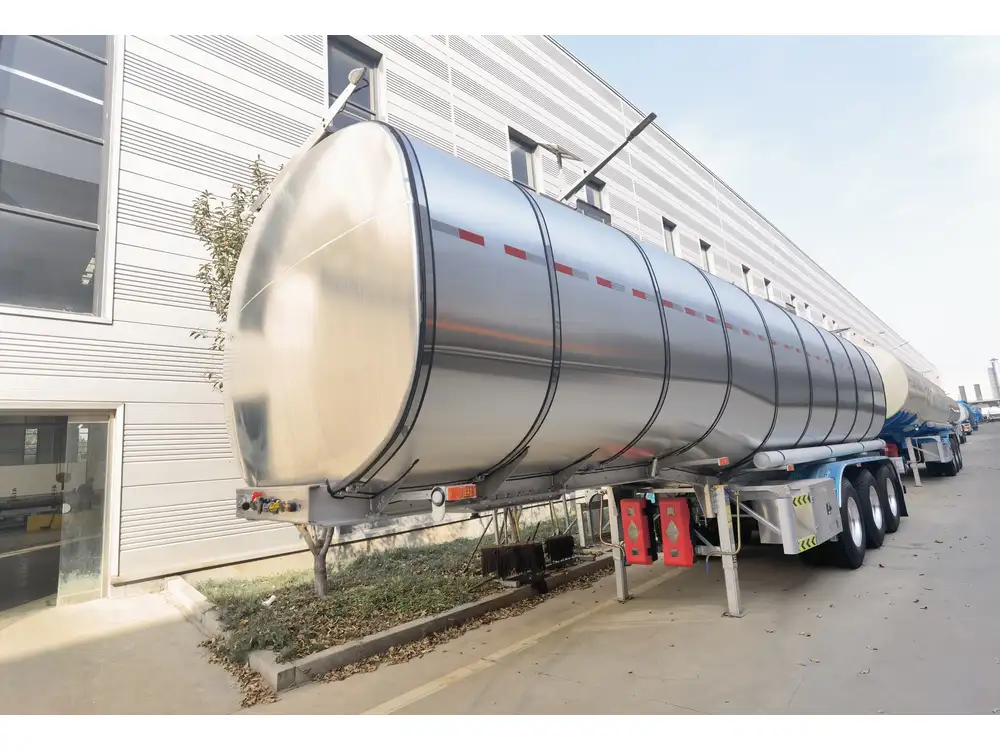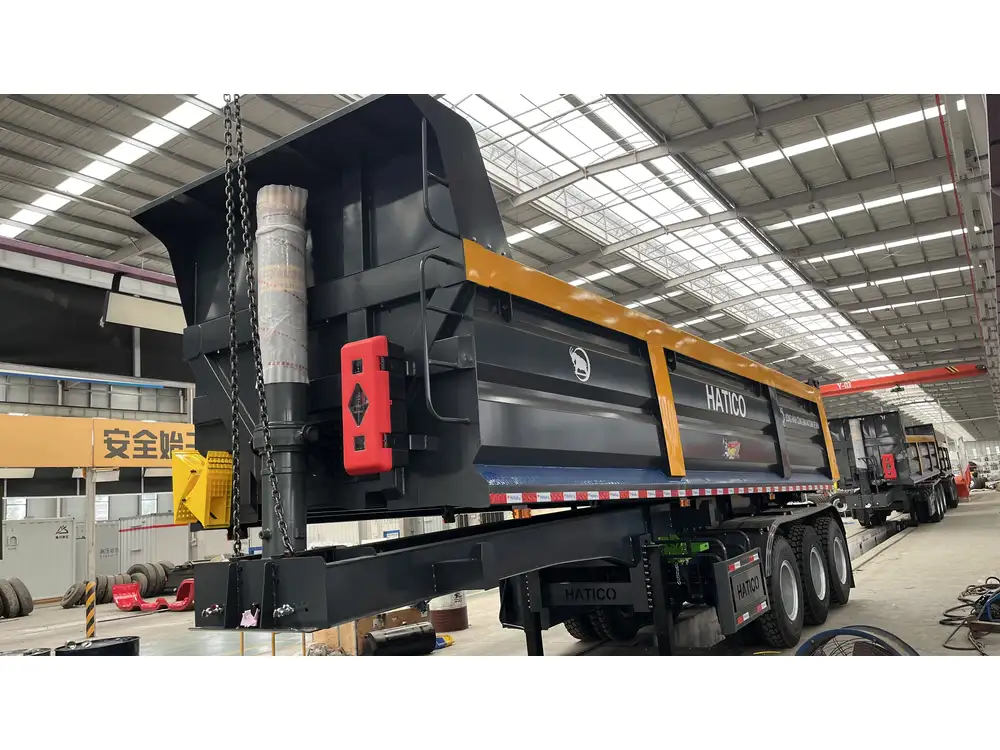When it comes to the construction and landscaping industries, dump trailers are invaluable assets. Among them, the 16-foot dump trailer holds a prominent place due to its versatility and capacity. For those in the market, understanding how many yards a 16-foot dump trailer can hold is crucial for making informed decisions about projects, hauling materials, and ensuring efficiency. This article delves into the various aspects of dump trailer capacity, including weight limits, material types, and practical considerations.
Dump Trailer Dimensions: An Overview
Before we can accurately determine the capacity of a 16-foot dump trailer, it’s important to break down its dimensions and features:
| Dimension Parameter | Measurement |
|---|---|
| Length | 16 feet |
| Width | 6 to 8 feet |
| Height | 1.5 to 3 feet |
| Side Height | 2 to 5 feet |
The Key Metrics
Dump trailer capacity can be measured in cubic yards, which is essential for calculating how much material can be transported in one load. Thus, the following formulas come into play:
Cubic Yards Calculation: [ \text{Cubic Yards} = \frac{\text{Length (in feet)} \times \text{Width (in feet)} \times \text{Height (in feet)}}{27} ]
This formula deductively derives the total cubic yards from the given dimensions of the trailer.

Capacity Breakdown for a 16-Foot Dump Trailer
For a standard 16-foot dump trailer that is 6 feet wide and has a side height of 3 feet, here’s how to calculate the volume:
Dimensions:
- Length = 16 feet
- Width = 6 feet
- Height/Side Height = 3 feet (average)
Cubic Volume Calculation: [ \text{Cubic Feet} = 16 \times 6 \times 3 = 288 \text{ cubic feet} ]
Convert to Cubic Yards: [ \text{Cubic Yards} = \frac{288}{27} \approx 10.67 ]
Thus, a 16-foot dump trailer typically holds approximately 10.67 cubic yards of material. The actual capacity can vary based on the specific dimensions and side heights of individual trailers, particularly if different configurations are utilized.
Weight Considerations & Material Types
While understanding volume is essential, weight is another critical factor to consider. Different materials weigh differently per cubic yard. Here’s a brief overview of some common materials and their estimated weights:
| Material Type | Weight per Cubic Yard |
|---|---|
| Topsoil | 1,200 lbs |
| Gravel | 1,400 – 1,600 lbs |
| Sand | 1,600 – 1,800 lbs |
| Asphalt | 2,000 – 2,400 lbs |
| Concrete | 2,400 – 2,700 lbs |
| Mulch | 500 – 800 lbs |
Weight Limitations
Most 16-foot dump trailers have a maximum weight capacity ranging from 14,000 lbs to 20,000 lbs, depending on the trailer’s construction and trailer axles.
Calculating weight capacity based on volume involves a simple multiplication of the average weight of the material by the total cubic yards:
For example, if you choose topsoil: [ \text{Total Weight} = \text{Cubic Yards} \times \text{Weight per Cubic Yard} ] [ \text{Total Weight} = 10.67 \times 1,200 \approx 12,804 \text{ lbs} ]
This calculation indicates that hauling topsoil would keep you within the limits, while hauling heavier materials like concrete may quickly approach the trailer’s limit.

Practical Applications: Efficient Usage of a 16-Foot Dump Trailer
Knowing the capacity and weight limits of a 16-foot dump trailer goes a long way in maximizing its efficiency. Below we examine some practical usage scenarios:
1. Landscaping Projects
When landscaping, one might use the trailer for:
- Topsoil: For laying sod or establishing a garden.
- Mulch: For weed suppression and moisture retention.
2. Construction Work
In construction settings, the trailers are often used to transport:
- Gravel: Essential for foundations and driveways.
- Concrete Debris: After demolition or renovation.

3. Waste Hauling
For cleanup and renovation projects, the trailer is ideal for hauling away:
- Trash and Debris: Collected from major renovations or spring cleaning.
4. Bulk Material Transport
Transporting bulk materials necessitates understanding the exact needs:
- Sand: Often used in masonry and for sandboxes.
- Asphalt: For repairs in roadwork or paving projects.
Factors to Consider Before Purchase
When considering a 16-foot dump trailer, assess the following elements to ensure it meets your requirements:

1. Trailer Build Quality
Look for:
- Durability of the frame and body.
- Quality of the hydraulic system for lifting and lowering the bed.
2. Tire Quality and Axle Configuration
Evaluate:
- The tire rating.
- Whether it’s a single or tandem axle design for stability.
3. Allowed Weight Capacity
Ensure the trailer can accommodate the specific materials you’ll be hauling regularly without exceeding load limits.

4. Materials of Construction
Choose between:
- Steel: More durable and suitable for harder materials.
- Aluminum: Lightweight but may not be as durable.
5. Features for Ease of Use
Consider additional features like:
- Vibrating beds for easier material unloading.
- Adjustable sides for greater capacity flexibility.
Conclusion: Get the Right Fit for Your Needs
Understanding how many yards a 16-foot dump trailer holds is critical for anyone involved in material simulation, whether for construction, landscaping, or waste management. With a container capacity of approximately 10.67 cubic yards, clarity about weight limitations and materials is essential to optimize performance efficiently.
Thus, we recommend that prospective buyers not only consider the size and capacity but also evaluate build quality, axle configuration, and additional features that can enhance usability. Making the right choice can lead to enhanced productivity, cost savings, and a successful completion of projects—whether large or small.

Frequently Asked Questions (FAQs)
Can I haul different types of materials in the same load?
- It’s best to avoid mixing materials, especially if they have vastly different weights or consistencies. Doing so may lead to unexpected weight issues.
What are some common mistakes to avoid?
- Overloading the trailer can cause undue strain on the axles and compromise safety.
- Not securing the load properly can lead to fines or accidents during transport.
How often should I maintain my dump trailer?
- Regular inspections should take place before and after every use, while more extensive maintenance, including brake inspections and hydraulic checks, should occur bi-annually.
By arming yourself with the right tools and knowledge, you can ensure that your 16-foot dump trailer serves its purpose effectively, enhancing your operational efficiency and project outcomes.



